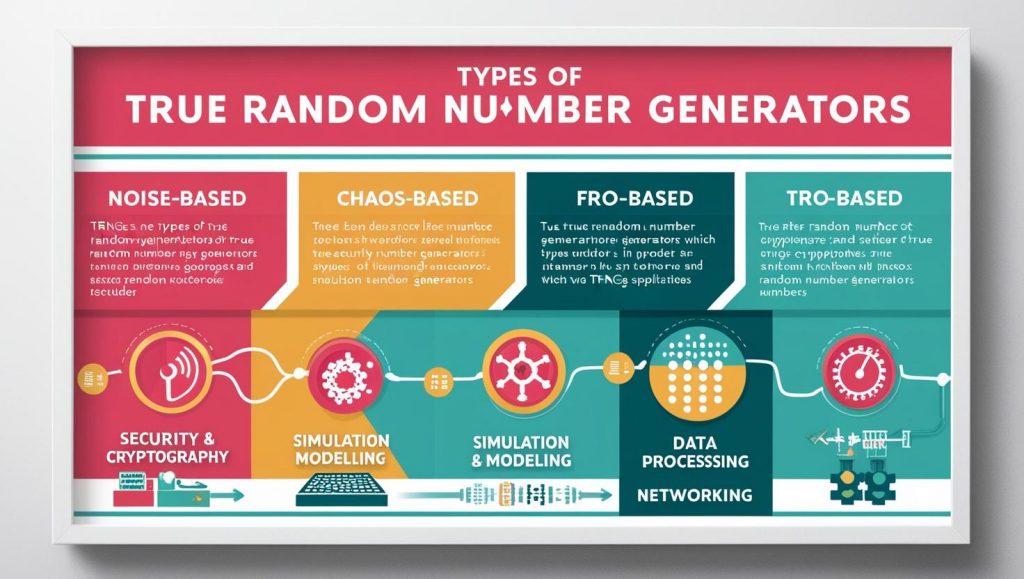As digital systems grow more interconnected and data-centric, the need for genuine unpredictability in computational processes has never been greater. True Random Number Generators (TRNGs) are hardware-based components that generate non-deterministic random values using natural physical phenomena—such as thermal noise, quantum tunneling, or radioactive decay. Unlike pseudo-random number generators (PRNGs), which rely on algorithms and can be replicated, TRNGs offer true entropy critical for sensitive applications across multiple sectors.
Security & Cryptography: Fortifying the Digital Backbone
Security is the most dominant and fast-growing application of TRNGs, especially in a world increasingly vulnerable to cyber threats, data breaches, and surveillance. TRNGs are essential for generating secure encryption keys, digital signatures, session tokens, and cryptographic nonces. They are widely used in:
-
Hardware security modules (HSMs)
-
Smartcards and secure elements
-
Trusted Platform Modules (TPMs)
-
Cryptocurrency wallets and blockchain protocols
With threats such as side-channel attacks and quantum computing on the horizon, software-based randomness is no longer sufficient. Government agencies, financial institutions, and critical infrastructure operators are adopting TRNGs to meet compliance standards like FIPS 140-3, Common Criteria, and NIST SP 800-90B. TRNGs help ensure that cryptographic operations are not only strong but also non-repeatable and unpredictable, making them harder to reverse-engineer or compromise.
Download PDF Brochure @
https://www.marketsandmarkets.com/pdfdownloadNew.asp?id=224265452

Simulation & Modeling: Creating Realistic, Randomized Scenarios
In industries where simulations are crucial—such as aerospace, defense, healthcare, and finance—the quality of randomness directly affects the accuracy and reliability of models. TRNGs improve simulation fidelity in applications such as:
-
Monte Carlo simulations used for probabilistic analysis
-
Climate and weather modeling
-
Particle physics and chemical reaction simulations
-
Financial risk modeling
Traditional PRNGs can introduce statistical artifacts or cyclical patterns that affect simulation outcomes. TRNGs, by contrast, provide non-deterministic, unbiased input that better reflects the randomness found in natural processes. This enhances not only model realism but also the robustness of testing environments—which is vital in mission-critical applications like drug development or autonomous vehicle behavior modeling.
Data Processing: Securing Data Integrity and Enhancing AI
As big data and AI continue to reshape industries, TRNGs are gaining traction in data processing pipelines, where randomization plays a key role in maintaining privacy, preventing bias, and protecting intellectual property. Use cases include:
-
Randomized algorithms in machine learning training and testing
-
Secure hashing and salting for password storage
-
Privacy-preserving data sampling and anonymization
-
Digital watermarking and copyright protection
In AI model training, shuffling data randomly is crucial to prevent overfitting and ensure generalization. TRNGs offer true entropy, improving the randomness of datasets and leading to more accurate and unbiased AI outcomes. In sensitive sectors like healthcare or legal tech, where data privacy is paramount, TRNGs support compliant data masking techniques that can’t be easily reversed or inferred.
Networking and Communications: Enhancing Trust and Performance
In modern communication networks—especially with the rise of 5G, IoT, and edge computing—TRNGs are becoming essential to maintain data integrity, secure transmission, and device identity. Key applications include:
-
Random backoff timers to prevent data collisions in wireless protocols
-
TLS/SSL key exchange in encrypted web communications
-
Authentication tokens for network access control
-
Session management in distributed systems and cloud environments
For example, when multiple devices attempt to communicate over a wireless channel, randomized delay algorithms powered by TRNGs help minimize interference. In secure communications, TRNGs provide the entropy source for cryptographic handshakes, ensuring each session is unique and resistant to eavesdropping. As more devices connect to networks autonomously, TRNGs ensure that identity provisioning and secure onboarding remain tamper-proof and scalable.
Market Trends and Outlook: From Core Security to Emerging Tech
The True Random Number Generator (TRNG) Industry worth $7.71 billion by 2030, driven by the convergence of cybersecurity, AI, quantum-safe encryption, and industrial automation. Some notable trends include:
-
Miniaturization of TRNGs for integration into IoT chips and mobile devices
-
Quantum-based TRNGs using entangled photon sources for ultra-secure randomness
-
Standardization efforts (e.g., ISO/IEC 18031) boosting regulatory adoption
-
Integration with FPGAs, ASICs, and edge processors for low-latency use
Leading vendors such as Rambus, ID Quantique, Intel, Infineon, and Microchip are focusing on delivering TRNGs that meet stringent compliance standards and integrate seamlessly with modern computing architectures. These advances are enabling TRNGs to become foundational tools not just in cybersecurity, but also in financial systems, autonomous vehicles, defense electronics, and next-gen simulation platforms.
Conclusion: TRNGs Are the Pulse of Secure, Intelligent Systems
As industries embrace digitization and connectivity, the need for true randomness becomes a strategic requirement. Whether it’s protecting encrypted transactions, simulating complex phenomena, or anonymizing sensitive data, True Random Number Generators offer a level of unpredictability and security that software algorithms cannot match.
Looking ahead, TRNGs will continue to expand into edge AI, quantum computing, and next-gen communication systems, becoming integral to both system resilience and innovation. Their role in ensuring non-repeatable, tamper-proof randomness will make them a cornerstone of trust in the digital future.
